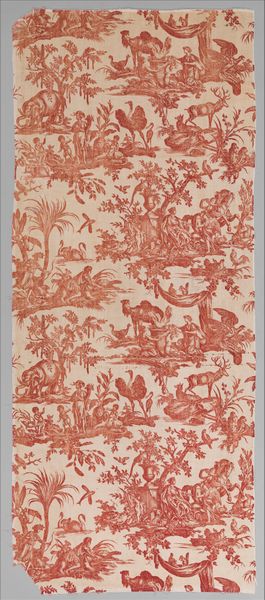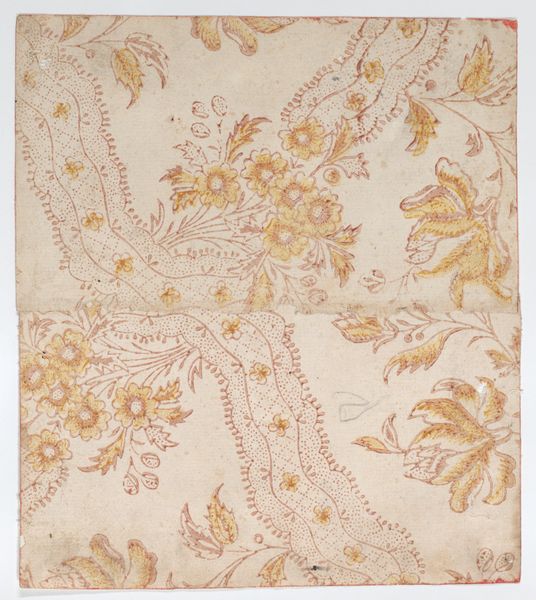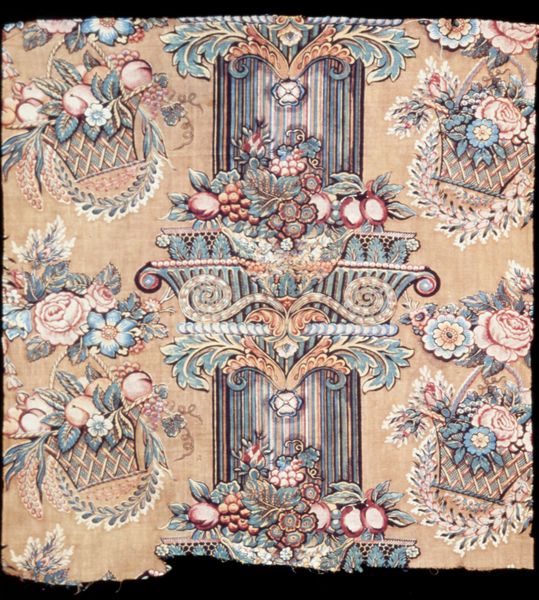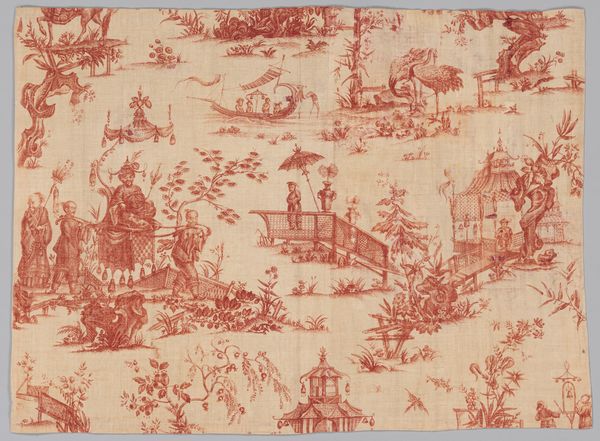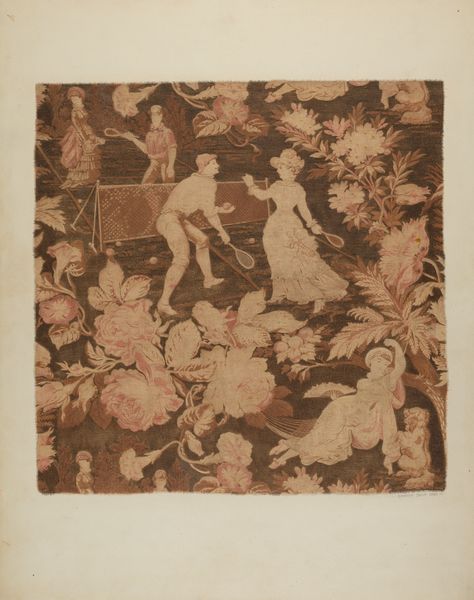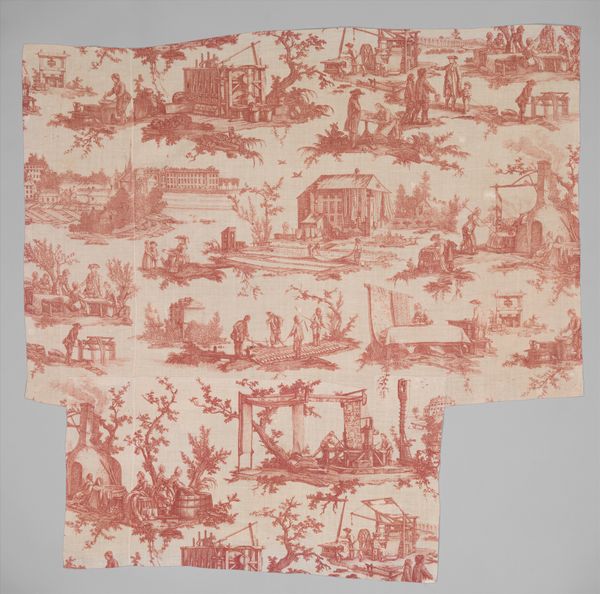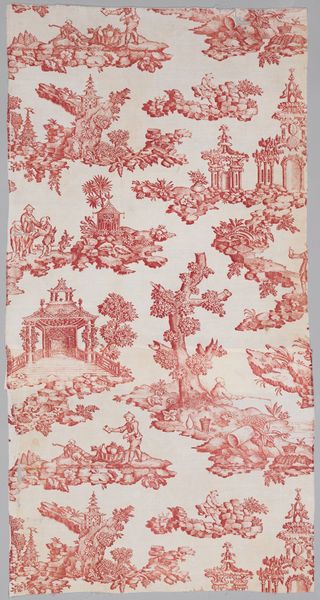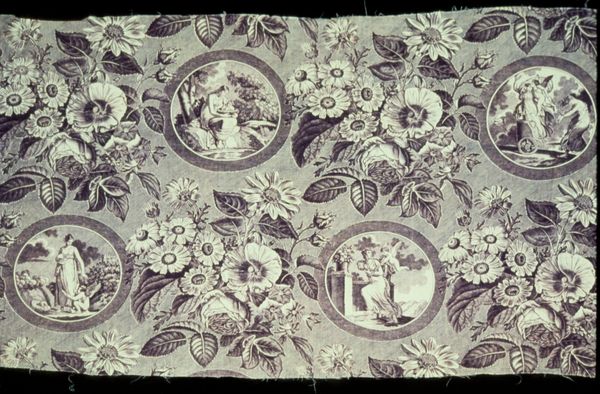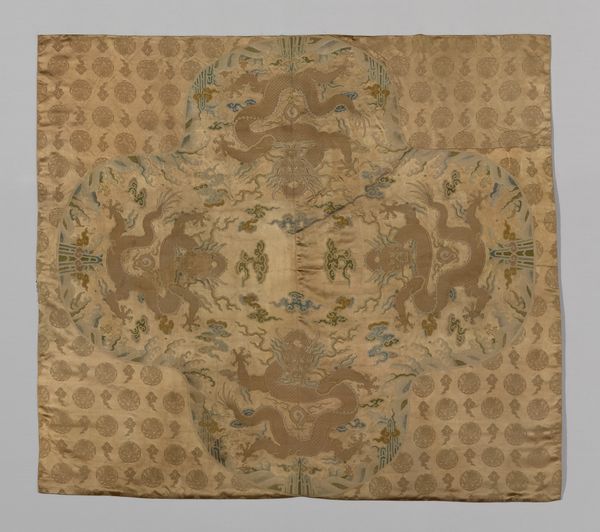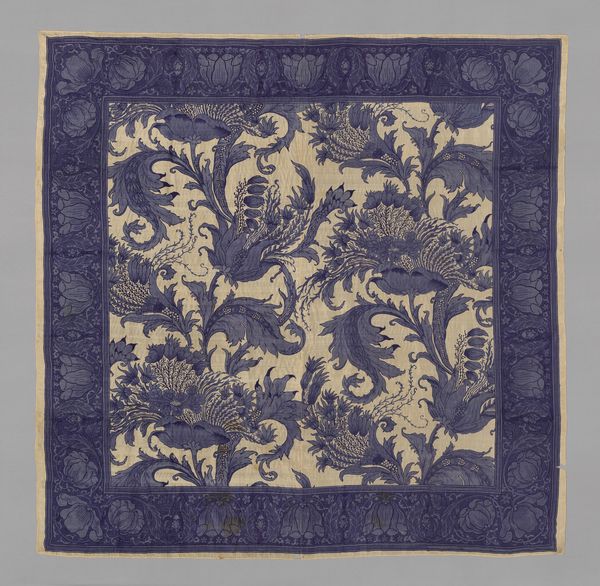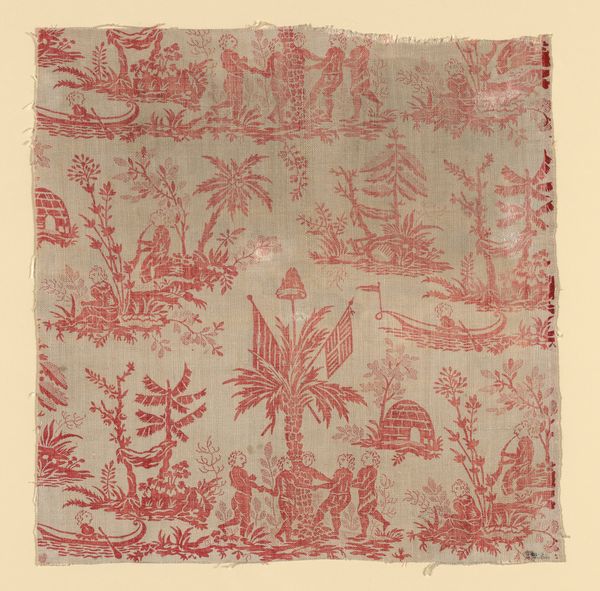
Les Quatre Éléments (The Four Elements) (Furnishing Fabric) c. 1780
0:00
0:00
Dimensions: 64 × 68.3 cm (25 1/4 × 26 7/8 in.)
Copyright: Public Domain
Louis de Boullongne the Younger created this furnishing fabric, "The Four Elements," featuring classical imagery. The artwork reflects the cultural milieu of the time, where classical allegories were popular in decorative arts. In the absence of a date, the style suggests it was made in France, likely during the late 17th or early 18th century. The imagery of putti and classical gods connects to the period's fascination with antiquity, often used to convey power, wealth, and refinement among the elite. The fabric’s function as a furnishing material also speaks to the social context. Decorative arts played a crucial role in defining social status, and the incorporation of classical motifs in domestic interiors signaled a patron's education and sophistication. To fully understand this piece, historians might consult pattern books, inventories of aristocratic households, and studies of the French textile industry. Such research would illuminate the social life of this furnishing fabric and the meanings it held for its original audience.
Comments
No comments
Be the first to comment and join the conversation on the ultimate creative platform.
